Low-maintenance and shade-loving, Camellias throw themselves into spellbinding bloom from late fall into early spring.
Available as trees or shrubs, Camellia flowers can be as simple as a wild rose. While others are as full blown as a peony. While you’ll grow them for the flowers, the evergreen dark glossy leaves look great year round. Here are six ways we love to use them.
ABOVE Grow Pearl Maxwell Camellia for knockout blooms in beautiful, double, shell pink. Mid-late season. Filtered sun. Zone 8 - 10.
PHOTOS Top Doreen Wynja; Camellia headshots Richard Schiell
Romantic Hedges and Screens
Few Camellias are “fast" growers: they typically reach 6'– 12' in 10 – 15 years. But, if you plan to stay on a property or leave breathtaking beauty behind, plant a Camellia hedgerow. Sasanqua varieties and some hybrids grow more quickly than japonicas. But, the flowers of japonicas last longer, so it's a bit of a tradeoff. To help you decide which Camellia to plant as a hedge, consider your conditions in summer. Sasanqua varieties can tolerate some sun.
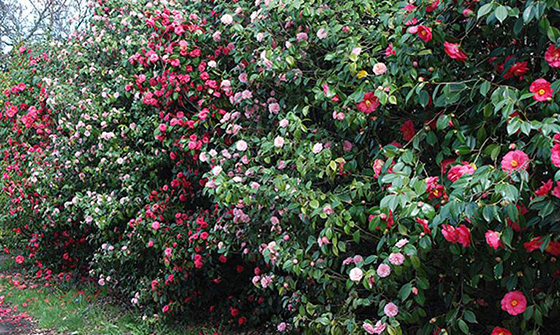
Carter’s Sunburst Camellia
Zone 8 – 10
Spectacular, double, medium-pink blooms streaked with ribbons of deeper pink. Filtered sun. Mid-season. Learn more
Nuccio’s Gem Camellia
Zone 8 – 10
Sparkling white, formal, double blooms shine against glossy, dark green foliage. Filtered sun. Mid-season. Learn more
Kramer’s Supreme Camellia
Zone 8 – 10
Deep red buds open to fragrant, peony-like, rosy-red blooms. Full shade to filtered sun. Mid-season.Learn more
Elegant Espalier
Where space is limited (or you just want a showstopping effect) Camellias can be trained to grow against a wall. Sasanqua varieties, with their open, arching growth are a good choice. Yuletide, Coral Delight, and Apple Blossom (below) are excellent options. Espaliers need work, especially over the growing season. However if you like to prune and shape plants, they're right up your alley.
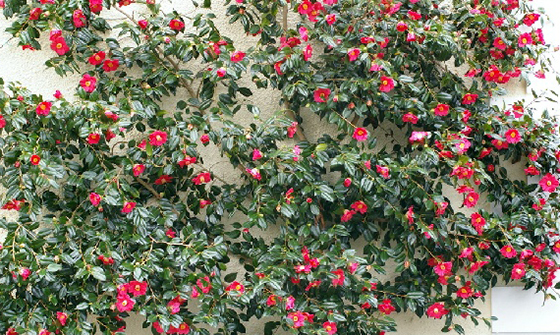
Yuletide Camellia
Zone 7 – 10
Single, brilliant red blooms centered with bright yellow stamens make an elegant statement. Filtered sun. Mid-season. Learn more
Coral Delight Camellia
Zone 8 – 10
Coral pink, semi-double blooms are Hibiscus-esque with yellow stamens backed by lustrous foliage. Filtered sun. Mid-season. Learn more
Apple Blossom Camellia
Zone 7 – 10
Profuse, pink-edged white blooms with golden-yellow stamens. Filtered sun. Early to mid-season. Learn more
Statement Tree for Winter Interest
Camellias naturally grow as a small to medium shrub, but may be trained as a small tree. Choose a Camellia that’s naturally tall and wide, like the three below. Then, just after it’s finished blooming, prune away lower branches until you get the look you want. To train with multiple trunks, leave upright stems in place, or keep just three to five of the strongest. Remove the rest and any branches from the lower third of your keepers.
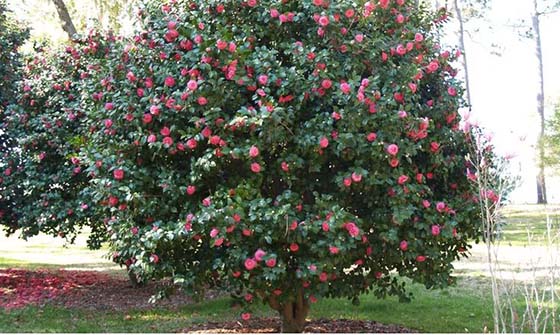
Jean May Camellia
Zone 7 – 10
Shell pink double blooms. Deeper shades of pink blush towards the center like a first kiss. Filtered sun. Mid-season. Learn more
Nuccio’s Bella Rossa Camellia
Zone 8 – 10
Abundant, 4" wide crimson blooms open over a long bloom season. Full shade to partial sun. Late winter to mid-spring. Learn more
Debutante Camellia
Zone 8 – 10
Masses of early-blooming, large, light pink, peony style blooms. Full shade to filtered sun. Winter to early-spring. Learn more
Shady Understory Solution
While most of the more famous Camellias tend to be taller, there are plenty that stay small and compact. These varieties are ideal for planting under tall, open trees where water and soil conditions are compatible. Tall, deep-rooted pine trees are ideal. Avoid planting them under shallow-rooted shade trees such as birch and maple. These are also a good solution to what to plant along a foundation on the shady side of the house.
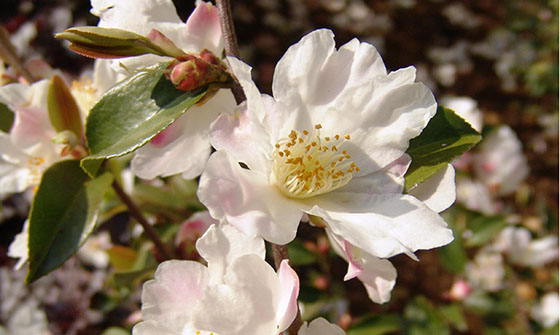
Shishi Gashira Camellia
Zone 7 – 10
Vibrant hot pink, semi-double blooms with golden yellow centers. Filtered sun. Early to mid-season. Learn more
Fairy Blush Camellia
Zone 7 – 10
Deep pink buds open to reveal dainty, single, apple-blossom-colored blooms. Filtered sun. Mid-to-late season. Learn more
Buttermint Camellia
Zone 7 – 10
Beautiful, pale, buttery yellow, semi-double, ruffled, slightly fragrant flowers. Filtered sun. Mid-to-late season. Learn more
Gorgeous Groundcover
While there aren’t an endless variety of them, some of the sasanquas have a naturally low-growing, horizontal habit. They make for pretty fabulous groundcover in partial shade. Use them under trees, between taller Camellia shrubs, or on slopes. Anywhere they can be left to ramble and branch out. Deer will munch on the pretty flowers (sigh), but they tend to leave the glossy, deep-green foliage alone.
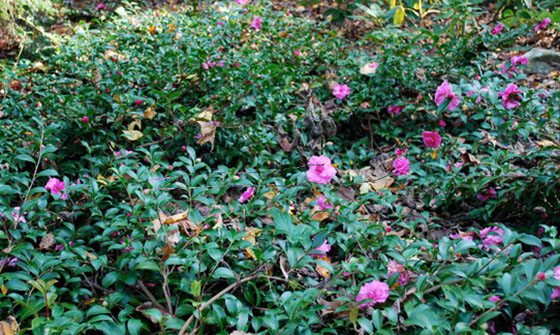
Chansonette Camellia
Zone 7 – 10
Profuse, brilliant pink, double blooms and with a short, pendulous habit. Filtered sun. Mid-season. Learn more
White Doves Camellia
Zone 7 – 10
Sparkling-white, semi-double blooms on a more compact, spreading form. Filtered sun. Mid-season. Learn more
Marge Miller™ Camellia
Zone 7 – 10
Full, soft pink flowers on a cascading shape. Luscious, like the frilliest of peonies. Filtered sun. Early. Learn more
Delightful Disguises
One of the best uses for Camellias is a way to hide not-so-lovely moments. For instance, unsightly fences or to add privacy. They're perfect for adding a shade-loving "something" you don’t want to fuss over. Side of the garage? Somewhat narrow space along the driveway? The lattice or HOA-installed fence that’s not giving you the privacy you want? A wall of Camellia makes all that disappear behind beautiful evergreen foliage.
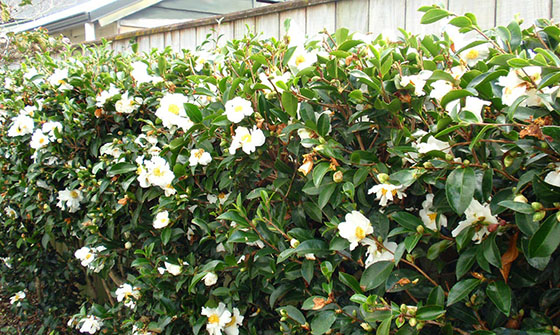
Bob Hope Camellia
Zone 8 – 10
Large, deep red, semi-double flowers, with frilly petals that mingle with golden stamen. Filtered sun. Mid-season. Learn more
Setsugekka Camellia
Zone 7 – 10
Large, semi-double, ruffly white flowers with a bright cluster of golden stamens. Filtered sun. Mid-season. Learn more
Pink-A-Boo® Camellia
Zone 7 – 10
Large, fragrant, deep pink blooms are centered with bright yellow stamens. Filtered sun. Mid-season. Learn more
How to Grow Camellias that Thrive
Camellias have an undeserved reputation for being hard to grow.
Plant above the soil line: The most common mistake people make is planting them Camellias too deep. The trunk base should be just above the soil line. Add several inches of mulch to keep the roots cool.
In containers: Camellias are excellent container plants. Only if they're planted in appropriately sized, well-draining containers, such as wooden tubs or half-barrels.
Soil pH and composition: They're acid-loving plants that do best when planted in well-drained soil. One that is amended with organic materials such as compost.
Fertilizer: Camellia shrubs need fertilizer, but not when they’re in bud or flower. Wait at least a month after they finish blooming. Then apply an acid-based fertilizer every eight weeks until they set their buds.
About bud drop: Some Camellias will drop buds. This can be a natural result of the shrub setting more buds than it can open. Or, more often, because it has not been planted with good soil drainage.
Light and siting: Camellias can add color to a northern or eastern deck or patio. Or, can be placed in the garden when there is filtered light from overhanging eaves or trees. The two most commonly grown kinds of Camellia are sasanquas and japonicas. Sasanquas, with their open, airy structure and smaller flowers and leaves, can handle more sun than japonicas. Sasanquas tend to bloom earlier, too. Japonicas are larger in size, with bigger leaves and flowers, and they thrive in shade. Japonicas tend to bloom later in the season.
Understanding Camellias' Bloom Season
Camellias are categorized by bloom times, and blooming periods can vary for warmer or cooler locations. Here are some general rules of thumb about Camellias' bloom season:
Sasanquas (Camellia sasanqua) bloom early to midseason
Japonicas (Camellia japonica) from mid to late season
Hybrids can bloom anytime from early to late season
Early blooms can happen October to December
Late bloomers shine from April to May
Crave inspiration for using Camellias as cut flowers? Read more





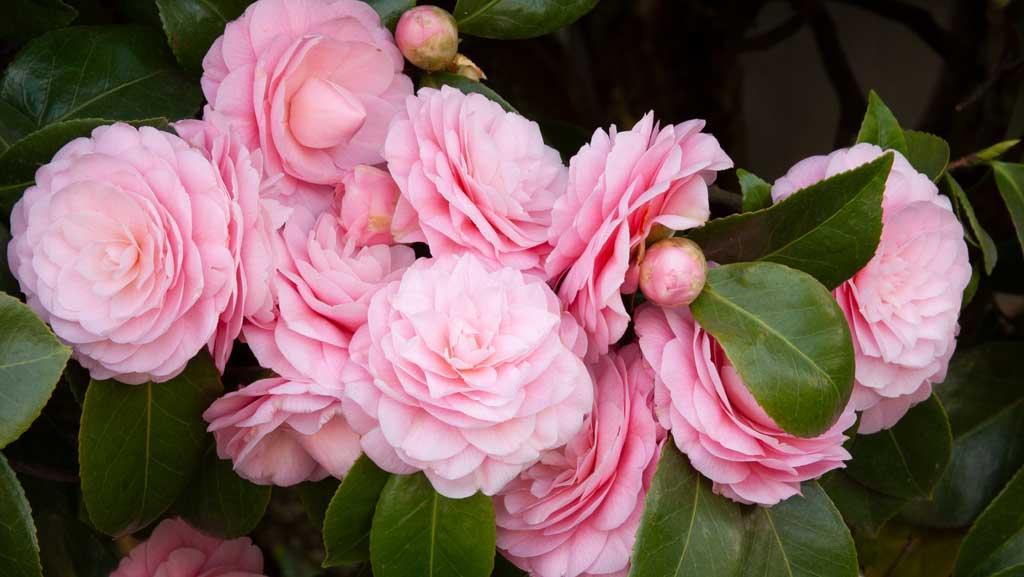
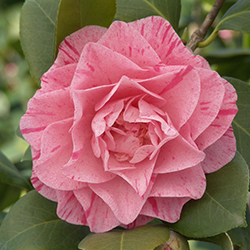
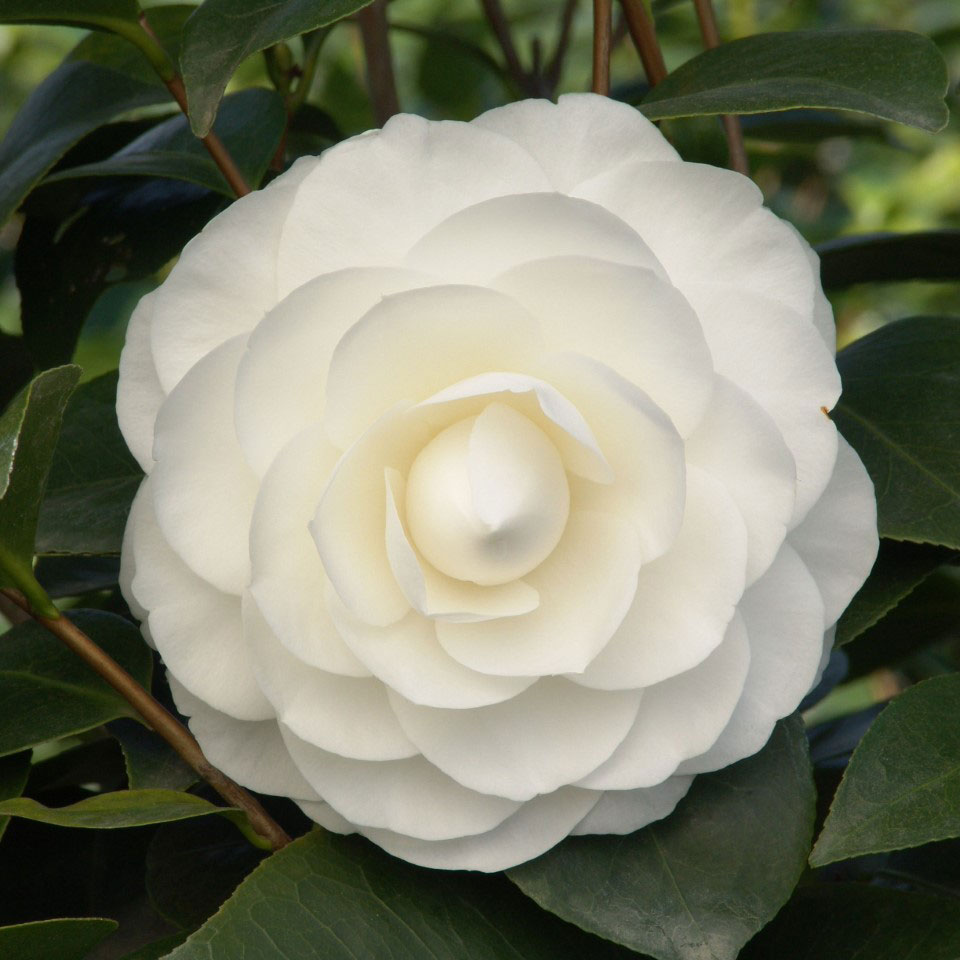
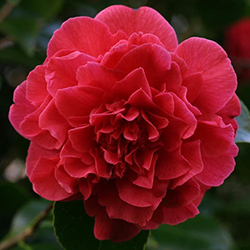
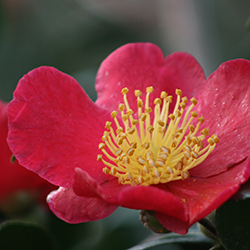
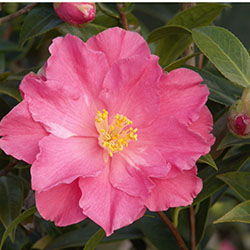
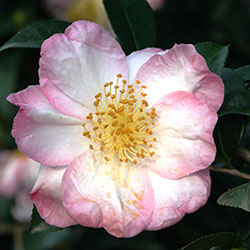
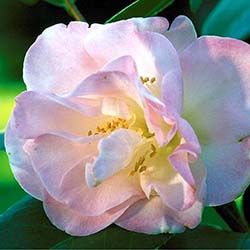
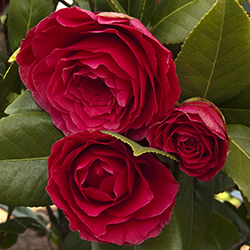
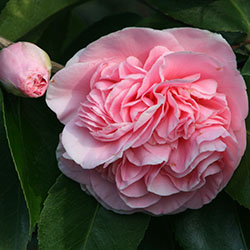

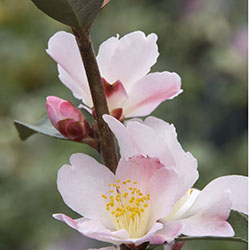
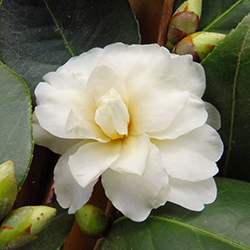
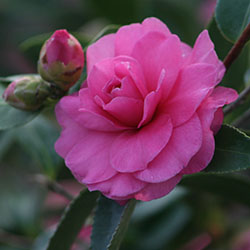

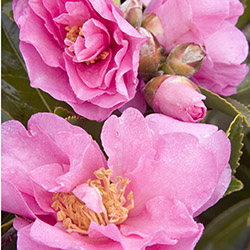
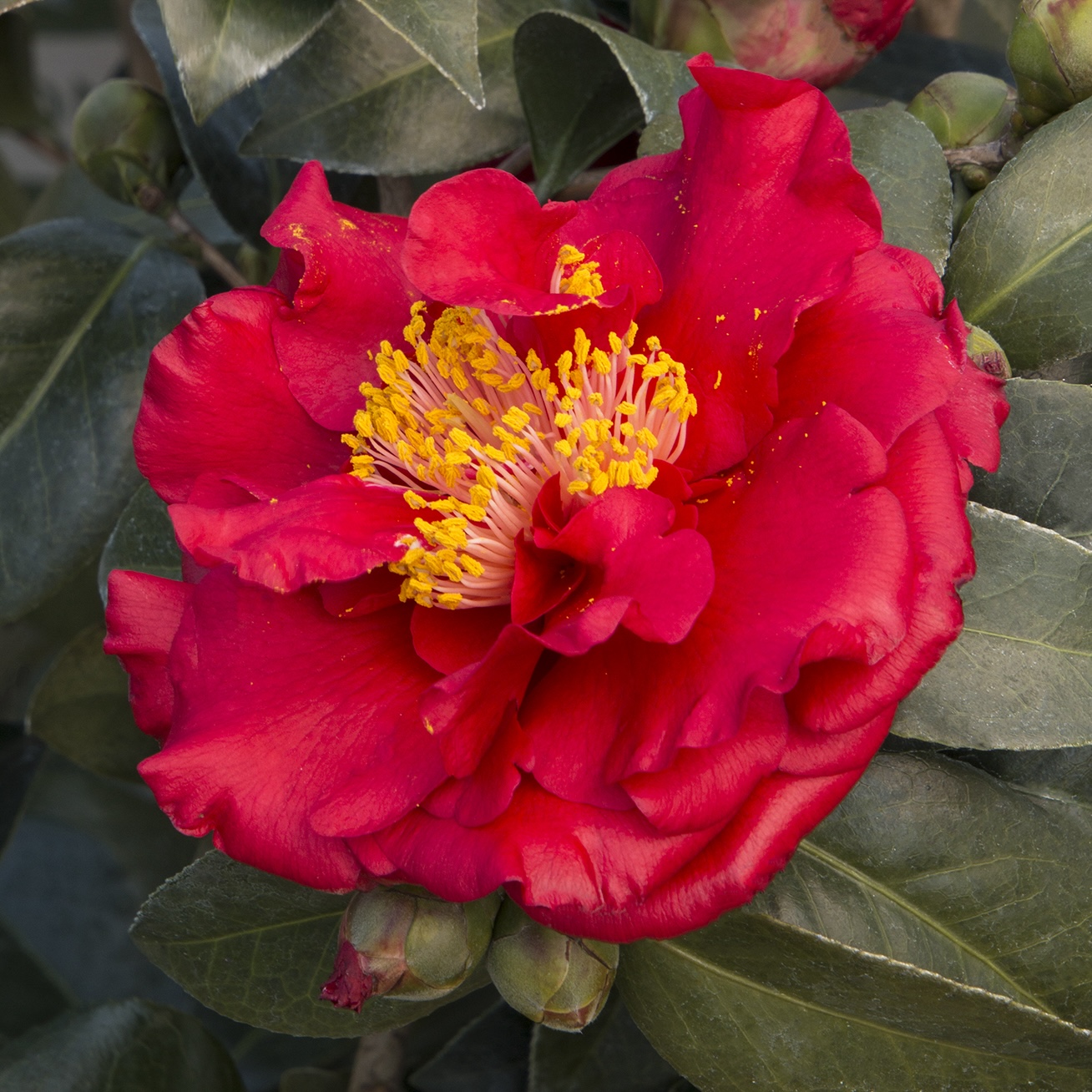
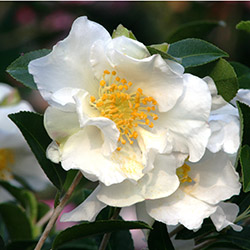
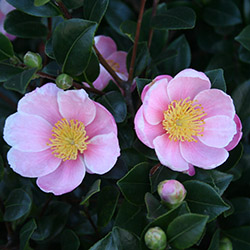
Please login to comment.
Don't have an account?
Sign Up for free